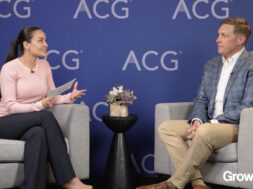Healthy Economic Outlook for Middle-Market Firms
Most middle-market companies are approaching the 2019 calendar year feeling upbeat about the economy and their prospects for continued growth.

The past year has brought significant regulatory, macroeconomic and policy changes for U.S. companies. While corporate tax reform, continued interest rate increases, tariffs on foreign goods and a tightening labor market have the potential to cause significant financial impact, most middle-market companies are approaching the 2019 calendar year feeling upbeat about the economy and their prospects for continued growth. This optimism is likely to translate into more business investment, higher wages, innovation and exploration of merger and acquisition opportunities over the coming months.
Tax Reform Perks up Profits
According to TD Bank’s 2018 Middle Market Survey of 350 U.S. companies with revenues from $50 million to $500 million, 71 percent of companies said tax reform will have a positive impact on their business. This should come as no surprise, especially given that the law cut the federal corporate income tax rate from 35 percent to 21 percent and repealed the corporate alternative minimum tax.
Most middle-market companies are approaching the 2019 calendar year feeling upbeat about the economy and their prospects for continued growth.
These modifications to the tax code are expected to strengthen corporates’ capital, offering businesses deeper cash reserves and the financial flexibility to expand and grow. Thus far, middle-market businesses across all industries have been preemptively using these savings to invest in plants, equipment, technology, and research and development. Many companies are also actively investing in people, with 61 percent planning to make new hires, according to TD’s survey, and multiple businesses making headlines for raising wages for existing staff.
Lower effective tax rates, coupled with a strong economy, also can make M&A activity more attractive in this segment. In fact, almost seven out of 10 middle-market businesses polled in the Middle Market Survey said they plan to engage in M&A activity within the next two years. Even though attractive deals have been slow to arise, whether because of high valuations or interest rate hikes, 85 percent of these businesses said they foresee no barriers to pursuing M&A opportunities.
Challenges on the Horizon
Though many midsize businesses have adopted a sunny outlook, they identified some challenges to their operations. Survey respondents called out domestic competition (41 percent), interest rate increases (34 percent) and global competition (32 percent) among the top issues they face.
Middle-market executives are also keenly watching the tight labor market, with the unemployment rate hovering around its lowest levels since 2000, according to the U.S. Bureau of Labor Statistics. This is creating a two-fold problem: Companies now have capital for expansion, but they have trouble filling both skilled and unskilled positions to support that growth. And companies face increased competition for the available workforce, meaning they need to prioritize retaining key employees to avoid additional job openings.
Overall, middle-market executives feel confident about their prospects heading into 2019. The key will be determining how best to navigate opportunities and challenges and position a company for long-term growth. As executives evaluate their growth plans, banks will continue to play a critical role and work closely with commercial customers to provide financing and guidance to help them succeed in the new year and beyond.
This article originally appeared in the January/February 2019 issue of Middle Market Growth.

Chris Giamo is head of Commercial Bank at TD Bank, overseeing commercial lending and banking across the bank’s Maine-to-Florida footprint. He joined TD Bank in 1998 as head of its New Jersey Middle Market Lending Group.


